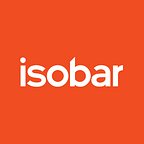Human X Machine: AI Redefining Creativity
Artificial Intelligence (AI) isn’t a new concept. Computer scientist Alan Turing used an enormous AI-powered machine called ‘Christopher’ during World War 2 which helped him and his team crack the “un-breakable” Nazi code, way back in the 1940s. Fast forward seventy-years, and AI is still in its infancy, but at the same time, gaining traction world-wide which is resulting in a phenomenal rate of progress.
So much so, brands are beginning to integrate AI-powered software and interfaces into their marketing ecosystems to evolve their advertising efforts. In a breakfast briefing at this year’s D&AD festival in London, Isobar UK’s Head of Digital Transformation Matt Gee unpacked why it’s fundamental for brands to leverage AI in today’s new era of creativity.
Matt explained how, “Advertising has traditionally been about that one moment of inspiration. But that’s now changed, advertising inspiration is everywhere. From social media to products, multiple consumer touchpoints mean brands can inspire people at any moment, ultimately leading to more transactions.”
Great creative has always been about great craft, as craft embodies the human empathy behind the creative idea. So in this new era of creativity, how is AI, technology and data redefining it?
Data-led creativity is the result of the recent surge of progress in understanding how to utilise AI, technology and data to enable bigger creative ideas and enhance our craft. Experts from ING, Microsoft, Tu Delft and Mauritshuis collaborated on The Next Rembrandt, an award winning project that personifies how AI, technology and data coupled with craft has the power to touch the human soul. The project is widely regarded as ground-breaking, for leveraging technology and data to create something that emotionally connects with people.
Microsoft’s Ron Augustus, who worked on The Next Rembrandt, said when describing the project, “We are using data to improve business life, but we haven’t used data in a way that touches the human soul. We used AI, technology and data the way that Rembrandt used his canvas, paint and brushes.”
By gathering the data of Rembrandt’s paintings, such as thickness of brush strokes using 3D scans and a deep-learning algorithm, the team were able to create a new Rembrandt painting almost four centuries after his death.
This revolutionary project also highlights how the make-up of the creative team must be modified to succeed, and to maximise opportunities for brands, in this new era of creativity. A creative team is no longer a copywriter and an art director, it’s a mix of strategists, technologists, business analysists as-well-as traditional creatives. A multi-functional creative team that understands AI, technology and data empowers agencies to transform copy into conversation, tone of voice into brand voice, physical products into communication and interfaces into environments, creating immersive brand experiences throughout the consumer journey.
Matt used a great example to illustrate the ‘products into communication’ approach. NFC experts Thinfilm and FMCG brand Diageo joined forces to reinvent the role a physical product plays in the consumer experience, by transforming the iconic Johnnie Walker Blue Label into a smart bottle, speaking to consumers in an entirely new way.
Using open sense technology, the bottle’s label connected directly with the consumer’s smartphone, delivering relevant content relative to the contents in the bottle. For example, when the bottle was full, it would provide cocktail recipes, and when the bottle was nearly empty, the consumer would receive replenishment notifications. By providing personalised messages, Johnnie Walker was able to communicate with consumers in a new way, enhancing their relationships and building brand trust and authenticity.
So, should we be scared about the onset of AI, technology and data as a creative industry and what it means for craft? Absolutely not. We should embrace it, and harness its capabilities to greater enhance our craft. In this new creative era, craft is more important than ever, as it allows human emotion and empathy to shine through.
But, we cannot unleash new technology into the world without setting parameters. As humans, as architects of experiences, and as creators of technology, we have a moral duty to make society a stakeholder, ensuring that what we create for our clients is beneficial to society, and makes lives better.
In Matt’s closing remarks, he echoed this point, “AI, technology and data should do the heavy-lifting, freeing up our time to create things. It doesn’t replace our craft or what we do, but rather allows us to create bigger and better things, faster.”
Andrew Luckie, Content Manager, Isobar Global
